parade
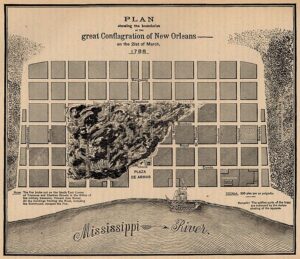
 I don’t know what kind of a city New Orleans was in 1788, but much of it changed that year, because on March 21, 1788, the first of two great fires left the city in ruins. There are a number of ways to destroy a city…time, storms, neglect, need, and the worst one, fire. Were it not for two great fires, there might be more of colonial New Orleans left for people to enjoy. Unfortunately, two great fires in the late eighteenth century left New Orleans and its inhabitants very few years to re-establish their institutions before the onset of American domination in 1803, making the city more American than French. Today, there are several fine houses that date to the last colonial decade, as well as the French Quarter, including the Cabildo and the Presbytere, but they are “post-fire” nevertheless.
I don’t know what kind of a city New Orleans was in 1788, but much of it changed that year, because on March 21, 1788, the first of two great fires left the city in ruins. There are a number of ways to destroy a city…time, storms, neglect, need, and the worst one, fire. Were it not for two great fires, there might be more of colonial New Orleans left for people to enjoy. Unfortunately, two great fires in the late eighteenth century left New Orleans and its inhabitants very few years to re-establish their institutions before the onset of American domination in 1803, making the city more American than French. Today, there are several fine houses that date to the last colonial decade, as well as the French Quarter, including the Cabildo and the Presbytere, but they are “post-fire” nevertheless.
The French Quarter of today is very different from what it once was, and it makes me wonder what it might have been like before. These days, the French Quarter receives millions of visitors annually, and it’s hard to imagine the carnage of the fire of Holy Saturday morning in 1788. The fire was devastating, with smoking ruins stretching from Chartres to Dauphine Street, and from Conti to Saint Philip. The fire actually began on Good Friday morning in the home of Spanish treasurer Don Vincente Nunez at Toulouse and Chartres. The wind was blowing out of the southeast bringing in a blustery cold front. The wind, combined with the fire, reduced over eight hundred homes and public buildings to ashes in a matter of hours. The church, the town hall, and the rectory on the Plaza de Armas were suddenly gone. Governor Esteban Miro told Spanish authorities of the “abject misery, crying, and sobbing” of the people. He wrote that the faces of the families, “told the ruin of a city which in less than five hours has been transformed into an arid and horrible wilderness; the work of seventy years since its foundation.”
The rebuilding of the city began right away, but had barely started when, in 1794 a second fire and two hurricanes swept the city. It seemed that New Orleans was doomed to devastation. The December 8, 1794, fire burned 212 buildings…fewer than the prior fire, but these buildings were more valuable. After the two storms and both fires were done, nearly all the public buildings, homes and businesses, except those fronting the river had been reduced to ashes or badly damaged. Through it all the Ursuline nuns in their convent on Chartres Street had prayed over their hometown, and as the fire got close to the convent on that Good Friday, the wind suddenly shifted. Miraculously, the convent survived and still stands today.
The French Quarter was essentially changed forever. “Baked tile and quarried slate replaced the roofs of ax-hewn cypress shingles. Buildings, set at the sidewalk or banquette, were of all brick, with common firewalls. The wide and shallow hipped roof, galleried townhouse perfected in the French period gave way to vertical, long and narrow Spanish-style town homes, many with overhangs, iron work and entresols or mezzanines. The Cabildo and Presbytere came into being. A new church rose from the ashes. A suburb opened on the upper side of town for residents wary of crowded Quarter conditions. Fire pumps were commissioned. The market moved riverside. Artisans were called in. Protestants gained a foothold. But people went homeless, the city indebted, and lives were lost to death or removal. The city was different.”
Since 1794, the French Quarter has been spared large fires, although there have been some smaller fires, and the hurricanes kept coming. They are just common to the area. A great storm that took place on August 19, 1812, swept away a one-year-old French Market building. Another in 1915 damaged the steeple of Saint Louis Cathedral. A fire in September 1816 took the popular Orleans Theater and Orleans Ballroom. Then, the rebuilt theater burned again in 1866. Fire damaged the Bank of Louisiana on Royal Street resulting in the monumental columns installed in the remodeling, which is now the home of the Vieux Carré Commission.
These devastating losses have resulted in a stringent French Quarter fire code. No longer is the Mardi Gras 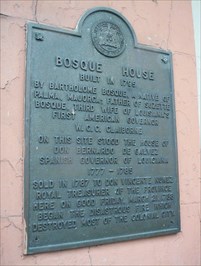
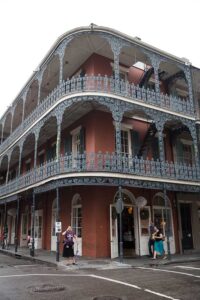 parade allowed to be motorized. The city takes prevention very seriously, knowing that fire spreading would be devastating to the French Quarter and to the city as a whole. Even with every precaution, the most important fires of the Twentieth Century occurred at individual structures. It is thought, by some historians, that the burning of the Old French Opera House on Bourbon, in 1919, was the “final nail” in the coffin of the old Creole culture in the Quarter, while others adopted that culture, thereby keeping its memory alive. Then, when the Cabildo burned in 1988, two hundred years after the First Great Fire, the citizens of the city felt the loss deeply. The structure was carefully restored, and it stands as a proud reminder of a city’s resolve to safeguard its heritage to this day.
parade allowed to be motorized. The city takes prevention very seriously, knowing that fire spreading would be devastating to the French Quarter and to the city as a whole. Even with every precaution, the most important fires of the Twentieth Century occurred at individual structures. It is thought, by some historians, that the burning of the Old French Opera House on Bourbon, in 1919, was the “final nail” in the coffin of the old Creole culture in the Quarter, while others adopted that culture, thereby keeping its memory alive. Then, when the Cabildo burned in 1988, two hundred years after the First Great Fire, the citizens of the city felt the loss deeply. The structure was carefully restored, and it stands as a proud reminder of a city’s resolve to safeguard its heritage to this day.
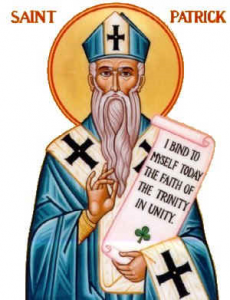 Most of us think of Saint Patrick’s day as a day to celebrate being Irish, and to celebrate even if you aren’t Irish. But this day is actually dedicated to a man who was considered legendary by the Irish people. Born in Great Britain, probably in Scotland, to a well-to-do Christian family of Roman citizenship, Patrick was captured and enslaved at age 16 by Irish marauders. For the next six years, he worked as a herder in Ireland, turning to a deepening religious faith for comfort. Following the counsel of a voice he heard in a dream one night, he escaped and found passage on a ship to Britain, where he was eventually reunited with his family.
Most of us think of Saint Patrick’s day as a day to celebrate being Irish, and to celebrate even if you aren’t Irish. But this day is actually dedicated to a man who was considered legendary by the Irish people. Born in Great Britain, probably in Scotland, to a well-to-do Christian family of Roman citizenship, Patrick was captured and enslaved at age 16 by Irish marauders. For the next six years, he worked as a herder in Ireland, turning to a deepening religious faith for comfort. Following the counsel of a voice he heard in a dream one night, he escaped and found passage on a ship to Britain, where he was eventually reunited with his family.
Much of what is known about Patrick’s legendary life comes from a book he wrote during his last years, called the Confessio. According to the Confessio, while in Britain, Patrick had another dream, in which an individual named Victoricus gave him a letter. The letter was entitled “The Voice of the Irish.” As he read it, Patrick seemed to hear the voices of Irishmen pleading him to return to their country and walk among them once more. After studying for the priesthood, Patrick was ordained a bishop. He arrived in Ireland in 433 and began preaching the Gospel, converting many thousands of Irish and building churches around the country. After 40 years of living in poverty, teaching, traveling, and working tirelessly, Patrick died on March 17, 461 in Saul, 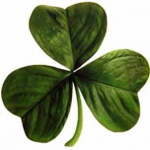 where he had built his first church.
where he had built his first church.
Since Patrick’s passing, countless legends have grown up around him. The Irish made him the patron saint of Ireland. They say he baptized hundreds of people on a single day, and that he used a three-leaf clover…the famous shamrock…to describe the Holy Trinity. He is often portrayed in art as trampling on snakes, a picture that came with the belief that he drove those reptiles out of Ireland. For thousands of years, the Irish have observed the day of Saint Patrick’s death as a religious holiday, attending church in the morning and celebrating with food and drink in the afternoon. It was a day to be thankful for the man who bought them to the Lord. As holidays often do, the ways of celebrating changed over the years. The first St. Patrick’s Day parade took place not in Ireland, but the United States, when Irish soldiers serving in the English military marched through New York City in 1762. I’m sure they were doing their best to keep with the tradition of their country. As the years went on, the parades became a show of unity and strength for persecuted Irish-American 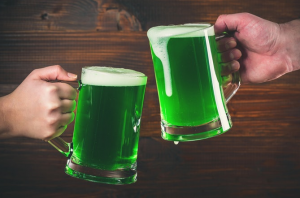 immigrants, and then a popular celebration of Irish-American heritage.
immigrants, and then a popular celebration of Irish-American heritage.
The rest of the world observed it differently…probably due to the Irish tourism’s efforts to promote their country. The party went global in 1995, when the Irish government began a large-scale campaign to market Saint Patrick’s Day as a way of driving tourism and showcasing Ireland’s many charms to the rest of the world. Today, March 17 is a day of international celebration, as millions of people around the globe put on their best green clothing to drink beer, watch parades and toast the luck of the Irish, but it was never really about luck, you know…it was about blessing. Happy Saint Patrick’s day…and cheers!!
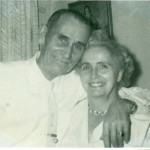 Like many avid genealogists, I find myself looking at my roots often. As Saint Patrick’s Day rolls around, I find myself contemplating my Irish roots. I’m sure there are more than I can begin to count, but I specifically know of the Shaw family. These are my grandmother, Harriett Byer’s ancestors. The thing that I find to be sad is that the records are not as extensive as I wish they were. My DNA connects me to this family, but the 1600s is as far as I have been able to trace. I suppose that many people would think that the 1600s is a long way back, but it is barely to the point of their immigration from Ireland to the United States. Even in America, the records aren’t well kept. I find it quite sad that some families are so meticulous in their record keeping, while others just weren’t.
Like many avid genealogists, I find myself looking at my roots often. As Saint Patrick’s Day rolls around, I find myself contemplating my Irish roots. I’m sure there are more than I can begin to count, but I specifically know of the Shaw family. These are my grandmother, Harriett Byer’s ancestors. The thing that I find to be sad is that the records are not as extensive as I wish they were. My DNA connects me to this family, but the 1600s is as far as I have been able to trace. I suppose that many people would think that the 1600s is a long way back, but it is barely to the point of their immigration from Ireland to the United States. Even in America, the records aren’t well kept. I find it quite sad that some families are so meticulous in their record keeping, while others just weren’t.
My Grandma Byer and her siblings were proud of their Irish roots. In their later years, they took a trip to Ireland to search for family information, graves, and living family members. I’m not sure if they found much 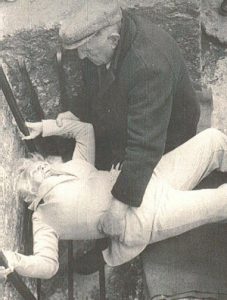 information, but without computers, information was harder to find then. It’s not that computers didn’t exist, but rather the simple fact that none of them knew how to use one. Nevertheless, they had a wonderful trip. They explored castles, town and villages, and they saw the amazing green fields that are synonymous of Ireland. They also did something that I have found interesting, when the had the opportunity to kiss the Blarney Stone. For those who don’t know about the Blarney Stone, “The Blarney Stone (Irish: Cloch na Blarnan) is a block of Carboniferous limestone built into the battlements of Blarney Castle, Blarney, about 8 kilometers (5 miles) from Cork, Ireland. According to legend, kissing the stone endows the kisser with the gift of the gab (great eloquence or skill at flattery).” It’s really just a goofy tradition, but I suppose it is a fun idea, and one they decided was worth testing.
information, but without computers, information was harder to find then. It’s not that computers didn’t exist, but rather the simple fact that none of them knew how to use one. Nevertheless, they had a wonderful trip. They explored castles, town and villages, and they saw the amazing green fields that are synonymous of Ireland. They also did something that I have found interesting, when the had the opportunity to kiss the Blarney Stone. For those who don’t know about the Blarney Stone, “The Blarney Stone (Irish: Cloch na Blarnan) is a block of Carboniferous limestone built into the battlements of Blarney Castle, Blarney, about 8 kilometers (5 miles) from Cork, Ireland. According to legend, kissing the stone endows the kisser with the gift of the gab (great eloquence or skill at flattery).” It’s really just a goofy tradition, but I suppose it is a fun idea, and one they decided was worth testing.
The big Saint Patrick’s Day parties are far more an American tradition than it is as Irish one. In fact, people might be surprised at the real background of the day. Saint Patrick’s Day was made an official Christian feast day in the early 17th century and is observed by the Catholic Church, the Anglican Communion (especially the Church of Ireland), the Eastern Orthodox Church, and the Lutheran Church. In reality, It is a day that  commemorates Saint Patrick and the arrival of Christianity in Ireland. It also celebrates the heritage and culture of the Irish in general. Celebrations generally involve public parades and festivals, cèilidhs (a social event at which there is Scottish or Irish folk music and singing, traditional dancing, and storytelling), and the wearing of green attire or shamrocks. Some Catholic Christians also attend church services and historically in Ireland the Lenten restrictions on eating and drinking alcohol were lifted for the day, which is likely where the holiday’s tradition of alcohol consumption came from. So, whether you celebrate in the tradition of America or the tradition of Ireland, Happy Saint Patrick’s Day to one and all.
commemorates Saint Patrick and the arrival of Christianity in Ireland. It also celebrates the heritage and culture of the Irish in general. Celebrations generally involve public parades and festivals, cèilidhs (a social event at which there is Scottish or Irish folk music and singing, traditional dancing, and storytelling), and the wearing of green attire or shamrocks. Some Catholic Christians also attend church services and historically in Ireland the Lenten restrictions on eating and drinking alcohol were lifted for the day, which is likely where the holiday’s tradition of alcohol consumption came from. So, whether you celebrate in the tradition of America or the tradition of Ireland, Happy Saint Patrick’s Day to one and all.
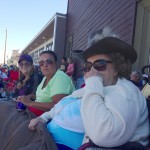 I saw an older woman standing at the bus stop today, waiting for the bus to arrive. That isn’t anything unusual, except that this woman was wearing a cowboy hat. I’m sure that many people wouldn’t think that was unusual either, given that I live in Wyoming, and in reality it was not that I thought it was unusual either, because I didn’t. What came to my mind was my mother, Collene Byer Spencer. Mom and my dad, Allen Spencer, embraced Wyoming, and the West in general, all their lives. They loved the history of the West, cowboy boots and cowboy hats, and they wore their western gear often, especially when they traveled.
I saw an older woman standing at the bus stop today, waiting for the bus to arrive. That isn’t anything unusual, except that this woman was wearing a cowboy hat. I’m sure that many people wouldn’t think that was unusual either, given that I live in Wyoming, and in reality it was not that I thought it was unusual either, because I didn’t. What came to my mind was my mother, Collene Byer Spencer. Mom and my dad, Allen Spencer, embraced Wyoming, and the West in general, all their lives. They loved the history of the West, cowboy boots and cowboy hats, and they wore their western gear often, especially when they traveled.
I know that there are lots of people who wear cowboy hats, as was proven by the older woman waiting for the bus, but what struck me at the time was that it brought back the memories of my mom wearing her cowboy hat. Mom especially loved 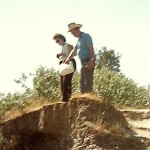 wearing her hat at the parade, as did my dad. They especially loved when the military people went by. Dad was a World War II veteran, and he was very proud of our soldiers. Mom loved it all. She would whoop and holler for every entry. I think she just didn’t want anyone to feel bad about their entry, and sometimes people would just sit there without clapping for anyone. Mom liked to make sure that everyone felt happy, parade or otherwise.
wearing her hat at the parade, as did my dad. They especially loved when the military people went by. Dad was a World War II veteran, and he was very proud of our soldiers. Mom loved it all. She would whoop and holler for every entry. I think she just didn’t want anyone to feel bad about their entry, and sometimes people would just sit there without clapping for anyone. Mom liked to make sure that everyone felt happy, parade or otherwise.
Mom and Dad had a number of cowboy hats, and the wore them all. They never went on vacation without a cowboy hat. I think they probably even took one on their 50th Anniversary cruise to Alaska. So many of my best camping memories include a cowboy hat. Dad never blew on a fire to get it going, he used his cowboy hat. Smart man, it would save a lot of work on the lungs…and the fire  always started faster for him than for us. So many cowboy hat memories.
always started faster for him than for us. So many cowboy hat memories.
As I drove past the older woman wearing the cowboy hat, I had a smile on my face, because just seeing her standing there reminded me so much of so many good times from my past. As a kid, I would never have thought of myself as a cowgirl…at that time in my life a cowgirl or country music just weren’t cool. These days I love country music, but I guess I’m still not a cowgirl. Nevertheless, my parents were, and they were proud of it. It doesn’t matter to me what they identified themselves with…I just know that I am very proud of them. And I love and miss them very much.
 Once a year, on March 17th, the world takes a day to celebrate the wearin’ o’ the green. Saint Patrick’s Day, is really just one of the more fun holidays, that for most of us means nothing more than pinching ayone caught not wearing green, eating corned beef and cabbage, or drinking green beer and celebrating with our friends.
Once a year, on March 17th, the world takes a day to celebrate the wearin’ o’ the green. Saint Patrick’s Day, is really just one of the more fun holidays, that for most of us means nothing more than pinching ayone caught not wearing green, eating corned beef and cabbage, or drinking green beer and celebrating with our friends.
If we lived in Ireland, the day would be very different. That is because in Ireland, Saint Patrick’s Day is a day to celebrate Saint Patrick, who was the patron saint of Ireland. Saint Patrick lived in Ireland in the late fourth and early fifth centuries, but he wasn’t Irish. He was was a Romano-Briton who was captured by Irish raiders and taken to 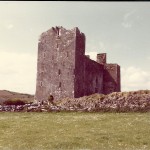 Ireland as a slave. Saint Patrick was the kind of man who, made lemonaid out of the lemons he found himself with. While he was enslaved in Ireland, he made it his goal to become a missionary there, and he is credited with bringing Christianity to the country, as a result. In Ireland, that makes the holiday a religious holiday, similar to Christmas and Easter. These days you can find Saint Patrick’s Day parades, shamrocks, and green Guinness beer in Ireland, but it’s mostly there for the tourists who think that is the right way to celebrate the day. For most of the Irish, however it would not be that way, and in fact, up until 1970 Irish laws mandated that pubs be closed on Saint Patrick’s Day. That is a stark contrast to the way the day is celebrated here, but it doesn’t mean the same thing to Americans.
Ireland as a slave. Saint Patrick was the kind of man who, made lemonaid out of the lemons he found himself with. While he was enslaved in Ireland, he made it his goal to become a missionary there, and he is credited with bringing Christianity to the country, as a result. In Ireland, that makes the holiday a religious holiday, similar to Christmas and Easter. These days you can find Saint Patrick’s Day parades, shamrocks, and green Guinness beer in Ireland, but it’s mostly there for the tourists who think that is the right way to celebrate the day. For most of the Irish, however it would not be that way, and in fact, up until 1970 Irish laws mandated that pubs be closed on Saint Patrick’s Day. That is a stark contrast to the way the day is celebrated here, but it doesn’t mean the same thing to Americans.
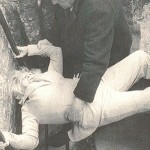
Like many people, I like to eat corned beef and cabbage and pinch those unsuspecting people who have forgotten their green, and while I don’t drink beer…green or otherwise, I like to have fun with the day. But, I also like to reflect a little bit on my Irish roots. I have several parts of my family who came from Ireland, including my Grandma Byer’s family. She wanted to get in touch with her Irish roots too, and so she and her siblings took a trip back to the old country, where they saw the castles, and cemeteries, kissed the Blarney Stone, and visited all the other sites, and I believe they met some of the family who still lives there too. It wasn’t Saint Patrick’s Day when she went, but they really had a good time.

 So often, when we have a holiday, people tend to think that it is just another day to have a family dinner and a day off of work. Often, they are celebrating the day for the wrong reason, but not so today. Labor Day is a day for our nation to pay tribute to its workers. No nation can be strong if it has no workers. So, as a show of gratitude, Labor Day was set aside to allow a day of rest for the American worker. When our nation was founded, there was largely nothing here. The native Americans lived in Teepees, so they could be mobile. They needed to follow the buffalo because that was their food supply. But, we had come from nations where there were houses and farms, and ways to get the things we needed.
So often, when we have a holiday, people tend to think that it is just another day to have a family dinner and a day off of work. Often, they are celebrating the day for the wrong reason, but not so today. Labor Day is a day for our nation to pay tribute to its workers. No nation can be strong if it has no workers. So, as a show of gratitude, Labor Day was set aside to allow a day of rest for the American worker. When our nation was founded, there was largely nothing here. The native Americans lived in Teepees, so they could be mobile. They needed to follow the buffalo because that was their food supply. But, we had come from nations where there were houses and farms, and ways to get the things we needed.
Nevertheless, this was a new nation, and it was going to take a lot of hard work to turn it into the great nation it has become. The work was going to be a lot of hard physical labor. We would also need those who would teach our children and others so that they could become doctors, scientists, inventors, and all the other jobs that would be needed to take this from a vast empty land, to a thriving nation that would be able to bring about the dreams that we all came over here to fulfill.
After a time of hard work, and much growth, the nation began to give increasing emphasis to a Labor Day holiday. It was decided that we, as a nation, needed to thank our laborers for all they had done to build this country. The first bill to be introduced was into the New York legislature, but the first state to pass a law was Oregon, on February 21, 1887. Over the course of that year, four more states passed legislation to honor laborers through a Labor Day holiday that was created by legislative enactment. Those states were Colorado, Massachusetts, New Jersey, and New York. By the end of the decade, Connecticut, Nebraska, and Pennsylvania were also listed among the states honoring laborers with a Labor Day holiday. By 1894, 23 other states had adopted the holiday in honor of workers, and on June 28 of that year, Congress passed an act making the first Monday in September of each year a legal holiday in the District of Columbia and the territories.
The first Labor Day holiday was celebrated on Tuesday, September 5, 1882, in New York City, in accordance with the plans of the Central Labor Union. The day began with a parade and continued on with lots of festivities. The Central Labor Union held its second Labor Day holiday just a year later, on September 5, 1883. That was rather odd, considering the fact that the holiday didn’t become official until 1887, and then it wasn’t in New York City. Later, like many holidays, it began to make less sense to keep the holiday on the fifth, and so the first Monday in September was chosen to be the permanent time to celebrate it. That makes sense when you think about it. If you are going to celebrate the laborers, give them a three day weekend. After all, that is 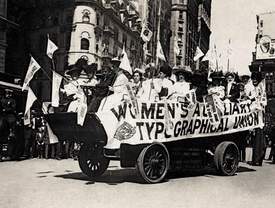
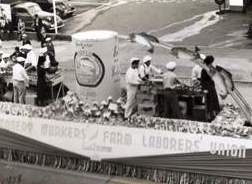 cause for celebration for most laborers. Of course, as we all know, the holiday doesn’t give every worker the day off. That would be almost impossible for all the obvious reasons. Nevertheless, as Labor Day arrives, I hope that each and every worker knows that whether they get the day off or not, this grateful nation has set aside this day to celebrate them, and to thank them for making this nation great. Happy Labor Day to workers everywhere!!
cause for celebration for most laborers. Of course, as we all know, the holiday doesn’t give every worker the day off. That would be almost impossible for all the obvious reasons. Nevertheless, as Labor Day arrives, I hope that each and every worker knows that whether they get the day off or not, this grateful nation has set aside this day to celebrate them, and to thank them for making this nation great. Happy Labor Day to workers everywhere!!
 Many holidays get their start on the birth or death of someone famous or very special, and Saint Patrick’s Day is no exception. It was the day that Saint Patrick died in Saul, Ireland. I’m sure that wasn’t surprising to anyone. So, the question then becomes, who was Saint Patrick, and why is he being honored?
Many holidays get their start on the birth or death of someone famous or very special, and Saint Patrick’s Day is no exception. It was the day that Saint Patrick died in Saul, Ireland. I’m sure that wasn’t surprising to anyone. So, the question then becomes, who was Saint Patrick, and why is he being honored?
Saint Patrick was a Christian missionary, bishop, and apostle of Ireland, but that in and of itself was not what made him famous. He lived in a time in history when little would be known of a person’s life if no one took the time to write things down. The Internet, Facebook, and Twitter were far off in the very distant future, so people wrote letters and kept journals. Saint Patrick wrote a book that he titled, “Confessio”, during his last year of life, and it is from these writings that we know what we know of him.
Saint Patrick was born in Great Britain probably in Scotland, to a wealthy Christian family of Roman citizenship. At the age of about 16 years, he was captured be Irish marauders and made to be a slave. For the next six years he worked as a herder in Ireland. Due to the long lonely days, far from family and other human companionship, he drew closer and closer to God for comfort. After hearing a voice in a  dream one night, he escaped and found passage on a ship that took him back to Great Britain and his family. Once he was back with his family, he had another dream. In the dream someone named Victoricus gave him a letter entitled “The Voice of the Irish.” He felt like the Irishmen were pleading with him to go back to Ireland.
dream one night, he escaped and found passage on a ship that took him back to Great Britain and his family. Once he was back with his family, he had another dream. In the dream someone named Victoricus gave him a letter entitled “The Voice of the Irish.” He felt like the Irishmen were pleading with him to go back to Ireland.
In 433, he returned to Ireland, after studying to become an ordained Christian minister and started preaching the Gospel. Thousands of Irishmen were converted to Christianity and many churches were built all around Ireland. After 40 years of devoting his life to God and His work, Saint Patrick died on March 17, 461, in the town of Saul, Ireland, which is where he built his first church.
Since his passing, many legends have grown up about him. He was made the patron saint of Ireland, and  people say that he baptised hundreds of people in a single day. He is also said to have used a three-leaf clover, which became the famous shamrock to describe the Holy Trinity. He is portrayed as trampling snakes because it is said that he had driven them out of Ireland. The Irish observe the day of his passing as a national holiday, attending church in the mornig and celebrating with food and drink in the afternoon. Later the rest of the world jumped on board, and the first Saint Patrick’s Day parade was celebrated in the United States, and involved Irish soldiers serving in the English military marching through the streets of New York City in 1762. The parades became a show of unity and strength for the Irish-American immigrants and the party went global in 1995 when the Irish government started a campaign to matket Saint Patrick’s Day as a way of driving tourists to Ireland. Today, March 17th is still celebrated by millions of people, many of whom probably have no idea what this man stood for. It’s something to think about for sure. Happy Saint Patrick’s Day!!
people say that he baptised hundreds of people in a single day. He is also said to have used a three-leaf clover, which became the famous shamrock to describe the Holy Trinity. He is portrayed as trampling snakes because it is said that he had driven them out of Ireland. The Irish observe the day of his passing as a national holiday, attending church in the mornig and celebrating with food and drink in the afternoon. Later the rest of the world jumped on board, and the first Saint Patrick’s Day parade was celebrated in the United States, and involved Irish soldiers serving in the English military marching through the streets of New York City in 1762. The parades became a show of unity and strength for the Irish-American immigrants and the party went global in 1995 when the Irish government started a campaign to matket Saint Patrick’s Day as a way of driving tourists to Ireland. Today, March 17th is still celebrated by millions of people, many of whom probably have no idea what this man stood for. It’s something to think about for sure. Happy Saint Patrick’s Day!!
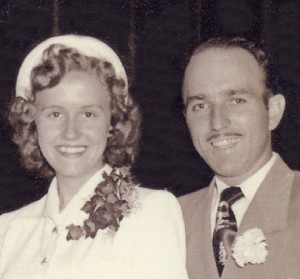
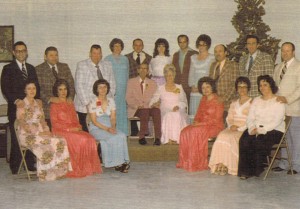 From the moment he first met her, my dad always called my mom, Doll. It was a term of endearment reserved for Dad alone to use. To us, of course, she was mom, or mommy when we were little, but to everyone who really knew her, she was the keeper of the sunshine. Mom was a person who was always happy. Even when times were tough, she managed to lift our spirits by always telling us to, “keep on the sunny side” whenever we left her house. It was the way we went to school, and later to work. Those were the words we heard after we had lunch or dinner at her house. She wanted our world to always have a bit of sunshine in it…even on a cloudy day.
From the moment he first met her, my dad always called my mom, Doll. It was a term of endearment reserved for Dad alone to use. To us, of course, she was mom, or mommy when we were little, but to everyone who really knew her, she was the keeper of the sunshine. Mom was a person who was always happy. Even when times were tough, she managed to lift our spirits by always telling us to, “keep on the sunny side” whenever we left her house. It was the way we went to school, and later to work. Those were the words we heard after we had lunch or dinner at her house. She wanted our world to always have a bit of sunshine in it…even on a cloudy day.
Mom was a dedicated servant of God…spreading His word to all who would listen…and some who didn’t want to. She wanted everyone, but especially those she loved, her parents, siblings, husband, children, and grandchildren, as well as all her extended family to be in Heaven when they left this world. She loved the Lord so much and looked forward to the day when she would be able to look upon His face, and thank Him for saving her. She loved going to church and singing praises to God, and hearing His word. She bought many teaching tapes and books, because she wanted to know all she could about this wonderful Saviour who loved her…no matter what!!
Mom loved a celebration. Being born on New Year’s Day, her birthday was always a celebration…Dad always made certain of that. He love a celebration too. Mom loved the Fourth of July fireworks, and the parade. Anyone who knows her…or ever sat next to her…will remember her whooping when a float or one of the fireworks particularly pleased her…and many of them did…many of them!! Looking back now on her whooping, it somehow doesn’t seem so embarrassing as it did in my younger days. I suppose all kids think the things their parents do are embarrassing sometimes. Nevertheless, that didn’t stop Mom. She was filled with joy, and sometimes…no, most of the time…it just bubbled out. She couldn’t have stopped it even if she had wanted to. And that’s ok, because even if you were embarrassed about it, it always made you smile in spite of your dignified self.
Late Sunday night, February 22, 2015, my dear mother left this world to go and meet the Saviour she had so long dreamed of meeting. I know He greeted her with the words, “Well done thou good and faithful servant”, because she was definitely that. I also know that she was met with some other cherished words. I expect, like my niece Jenny said, that my dad was standing there at the gates, and he immediately said, “Hello Doll.” It has been just over seven long years since he left us, and Mom has missed him so much. The next sweet words she likely heard were, “Hi Grandma!!” spoken by her two little great granddaughters, Alyssa and Laila, “We’ve been waiting to get to know you!!” And of course, there were greeting from her parents, in-laws, siblings, and other family members who have gone ahead of her. Yes, Heaven gained a new little bit of sunshine last Sunday evening, and the Earth just doesn’t seem quite as bright as it was before, because our Keeper of the Sunshine has gone to her Heavenly home.
Mom went home on her terms. She went healthy. She had a great week, having lunch with her kids, and going to dinner on Thursday night with my sister, Cheryl Masterson and me, at her favorite place…Red Lobster. She went to church on Sunday morning and very much enjoyed being surrounded by her beloved family and church 
 family, all of whom she considered to be a great blessing. She set up a visit with her sisters, brother, and other family members to go spend the afternoon with her sister, Evelyn, who was in the hospital. She and Cheryl had a nice quiet evening, and then Mom was going to bed, but she decided to go to Heaven instead. Mom, we miss you so much already. Our lives will never be the same again…until we are together forever in Heaven. We love you so very much. We will see you again very soon.
family, all of whom she considered to be a great blessing. She set up a visit with her sisters, brother, and other family members to go spend the afternoon with her sister, Evelyn, who was in the hospital. She and Cheryl had a nice quiet evening, and then Mom was going to bed, but she decided to go to Heaven instead. Mom, we miss you so much already. Our lives will never be the same again…until we are together forever in Heaven. We love you so very much. We will see you again very soon.
 My mom always wanted to hear nothing but happiness in her home. Really, what parent doesn’t? The biggest problem was that she had five daughters who were all very capable of being drama queens, and we didn’t mind a good argument or even a big fight either. That situation made for a house that could, on occasion, be…a little less than happy. I’m sure we pretty much drove her crazy at times. Mom tried a lot of things to restore her preferred mood, like singing “You Are My Sunshine” or doing other goofy things.
My mom always wanted to hear nothing but happiness in her home. Really, what parent doesn’t? The biggest problem was that she had five daughters who were all very capable of being drama queens, and we didn’t mind a good argument or even a big fight either. That situation made for a house that could, on occasion, be…a little less than happy. I’m sure we pretty much drove her crazy at times. Mom tried a lot of things to restore her preferred mood, like singing “You Are My Sunshine” or doing other goofy things.
Of course, Mom’s cheerfulness wasn’t just during times when we were fighting, and she could get grouchy if she needed too, but then who can’t? The funny thing about some of the things Mom used to do is how totally random they were. Take the Cha-Cha for instance. Most people would never imagine that my mom would do the Cha-Cha…and do it often, but she did. It was all a part of her love for life style. Sometimes, that happiness would just burst out of her, and she had to do something with it. It was like a nervous energy of sorts. You never knew when to expect it. It was totally random, but you had a pretty good idea that this would not be the last time your would see it.
Of course, she did other things with that happy energy, and as kids, and even sometimes as adults, we were a bit embarrassed about some of them. The parade is a prime example. Mom just can’t help but let out a big “Woo Hoo” when the floats go by. She hates for anyone not to be cheered on for their efforts. She stands out in the crowd too, because she always wears her  cowboy hat. I used to think that was how everyone knew just who it was doing all the “woo hooing”, but then I realized that lots of people had cowboy hats on…Mom was just the one with the loud voice that happened to be “woo hooing”…and by the way, everyone else was “woo hooing” too, so I seriously doubt that anyone even noticed my mom’s “woo hooing”…except maybe her kids. I used to think, “Oh my gosh!! Do you have to do that?” But these days, it doesn’t bother me. I guess that as we get older, we don’t worry so much about what other people think, and we are finally able to just enjoy the moment. That’s what my mom was always able to do…enjoy the moment. Maybe more of us should be like that.
cowboy hat. I used to think that was how everyone knew just who it was doing all the “woo hooing”, but then I realized that lots of people had cowboy hats on…Mom was just the one with the loud voice that happened to be “woo hooing”…and by the way, everyone else was “woo hooing” too, so I seriously doubt that anyone even noticed my mom’s “woo hooing”…except maybe her kids. I used to think, “Oh my gosh!! Do you have to do that?” But these days, it doesn’t bother me. I guess that as we get older, we don’t worry so much about what other people think, and we are finally able to just enjoy the moment. That’s what my mom was always able to do…enjoy the moment. Maybe more of us should be like that.
 I was at the annual Fair Parade yesterday, and watching the crowd along with the parade. We were sitting in a group of my niece Jessi’s co-workers, who were kind enough to save us seats along with the rest of our group. They were all lovely people, and watching their children and grandchildren enjoy the parade and collecting candy was a lot of fun. As I was watching, one of the moms wanted to get a picture of her daughter, and as the camera came up, the little girl smiled and held up her treasurers, as if on demand. Once the picture was taken, the smile disappeared. The little girl was not angry, she just went back to her own thoughts, and the need for the smile on demand was obviously over.
I was at the annual Fair Parade yesterday, and watching the crowd along with the parade. We were sitting in a group of my niece Jessi’s co-workers, who were kind enough to save us seats along with the rest of our group. They were all lovely people, and watching their children and grandchildren enjoy the parade and collecting candy was a lot of fun. As I was watching, one of the moms wanted to get a picture of her daughter, and as the camera came up, the little girl smiled and held up her treasurers, as if on demand. Once the picture was taken, the smile disappeared. The little girl was not angry, she just went back to her own thoughts, and the need for the smile on demand was obviously over.
Of course, we all smile when things are funny, or make us happy, but from the time we are little babies, we are being taught the smile on demand, for pictures, meeting people, or just to show that we are one big happy family. I don’t mean fake smiles, just parents wanting those great moments with their kids to be great. And kids love those moments too. Once the picture is taken, they want to see how good it turned out, and they love it when you show the picture around, or put it on Facebook.
When I think about the times when I have begged my daughters or grandchildren to smile, as babies or otherwise, for pictures or whatever, it almost makes me cringe. Mostly because as a young mother, I wanted everything about my babies to be perfect, and 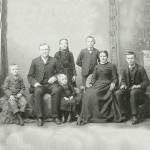 when they were fussy at picture time, especially when a photographer was involved, it was always a nightmare. Then when they got a little older, you could pretty much get a smile on demand, as with the little girl at the parade, and it seemed that all was right in my world again.
when they were fussy at picture time, especially when a photographer was involved, it was always a nightmare. Then when they got a little older, you could pretty much get a smile on demand, as with the little girl at the parade, and it seemed that all was right in my world again.
I would still take the forced smile on demand look over the tight lipped lack of smile pictures that seemed to by the normal when pictures first started being taken. It seems like all the old time pictures had tight lipped faces, which tells me that the people weren’t very happy. That was probably not the case, but rather just the way it was done back then.

